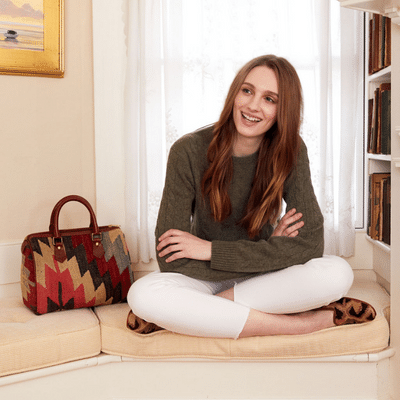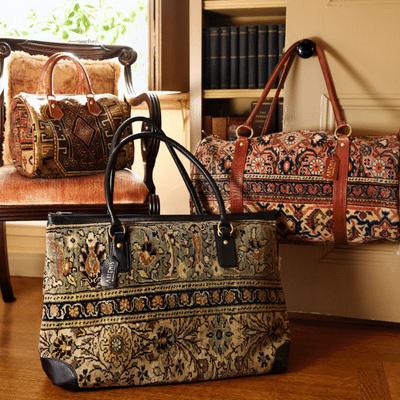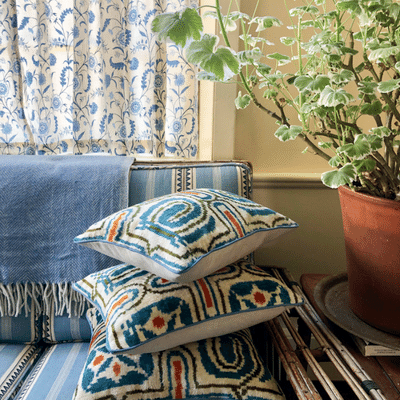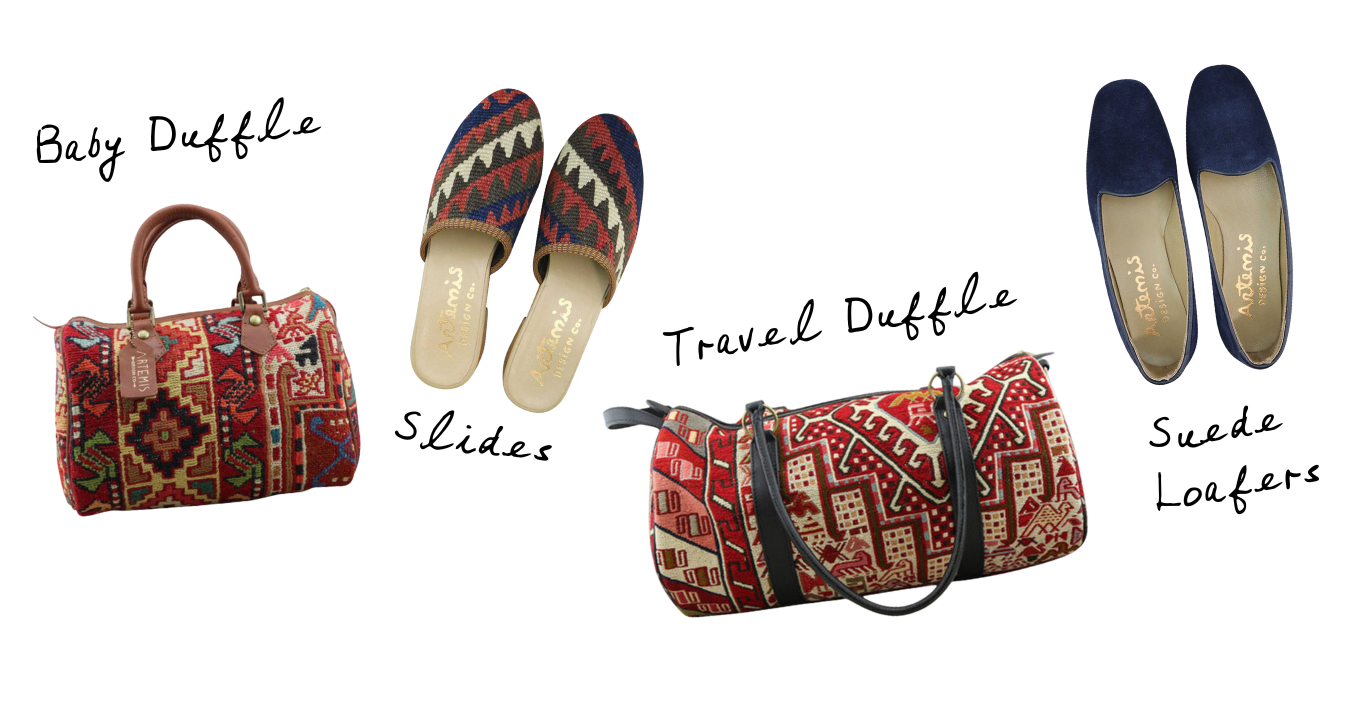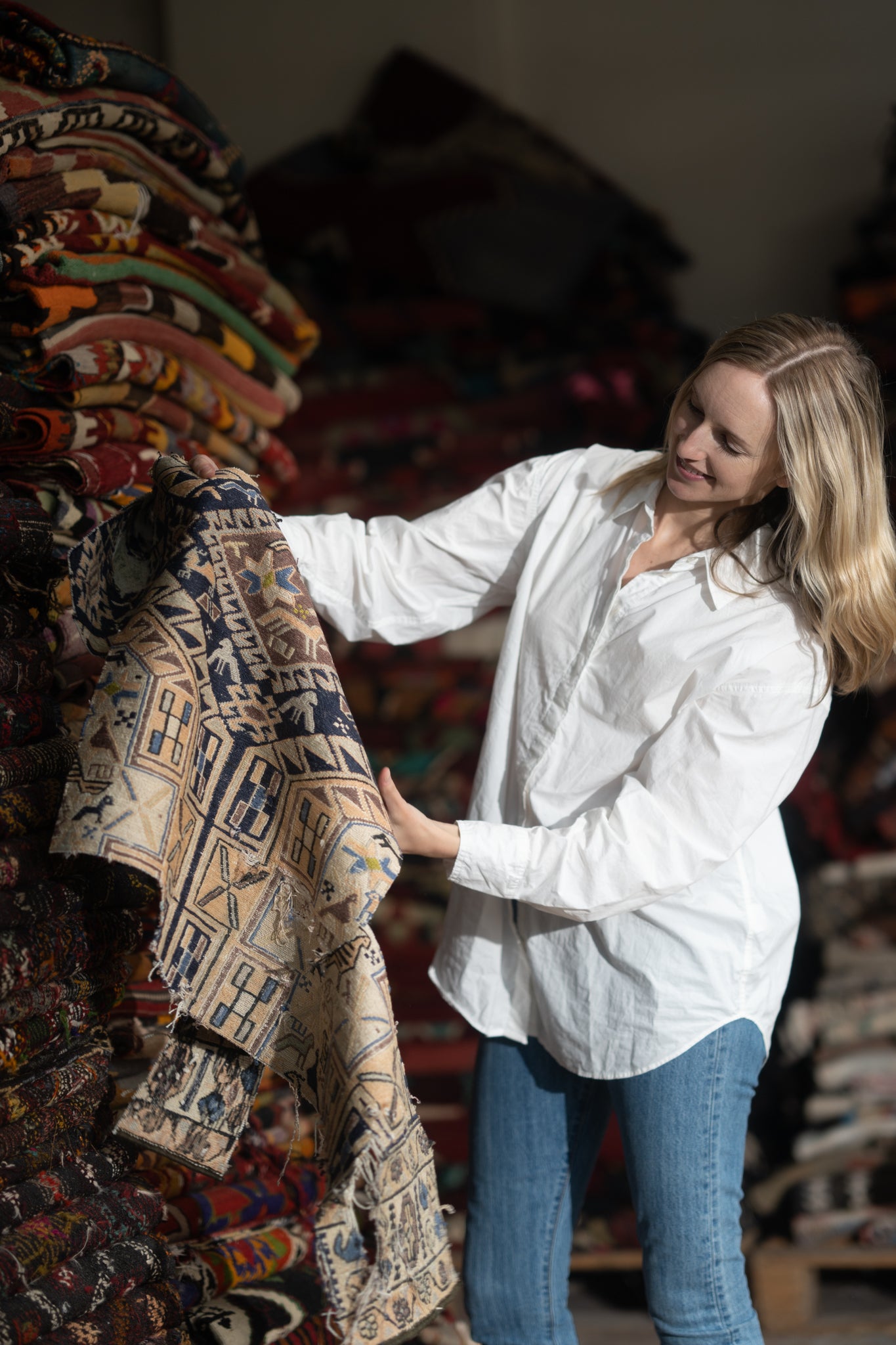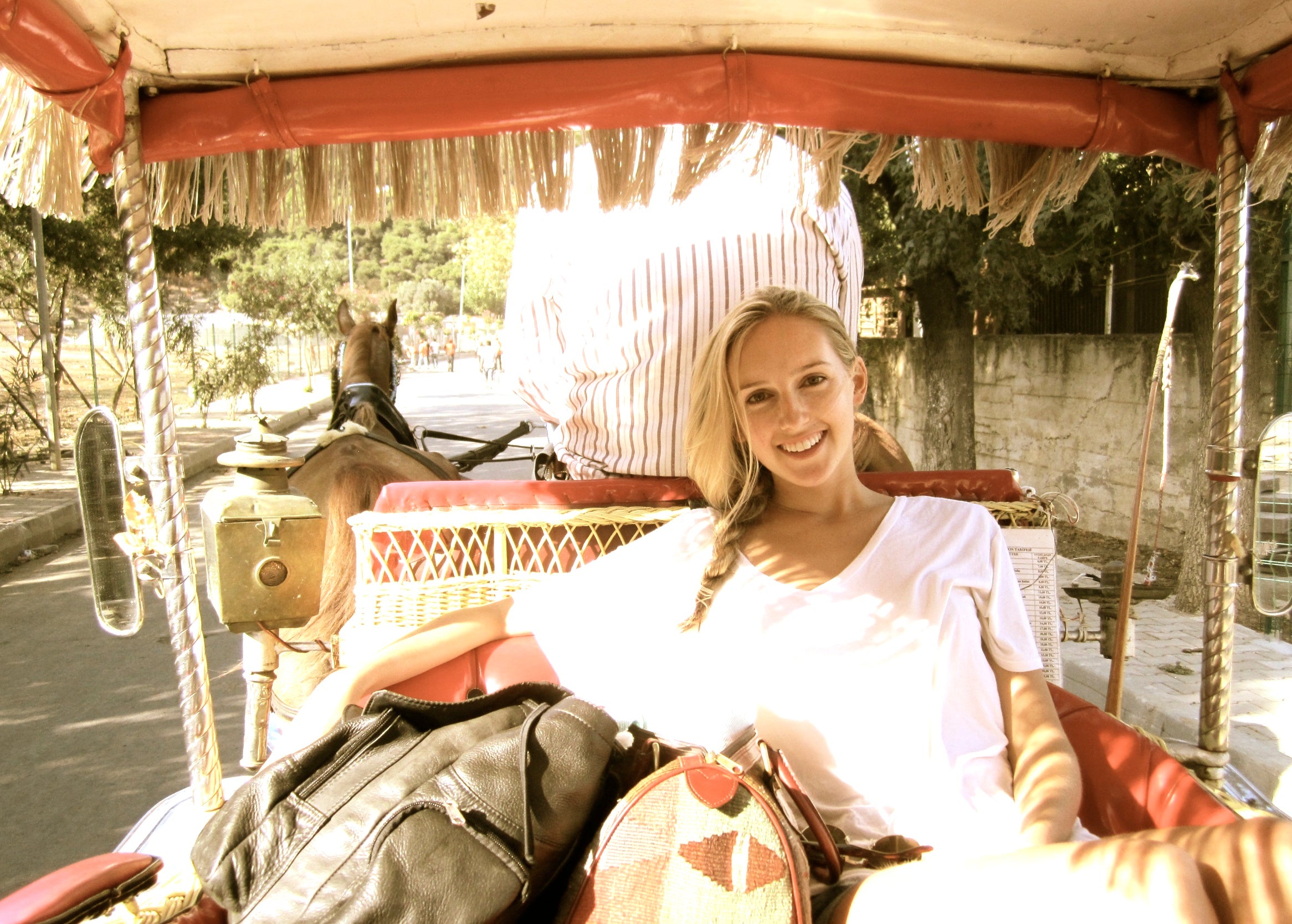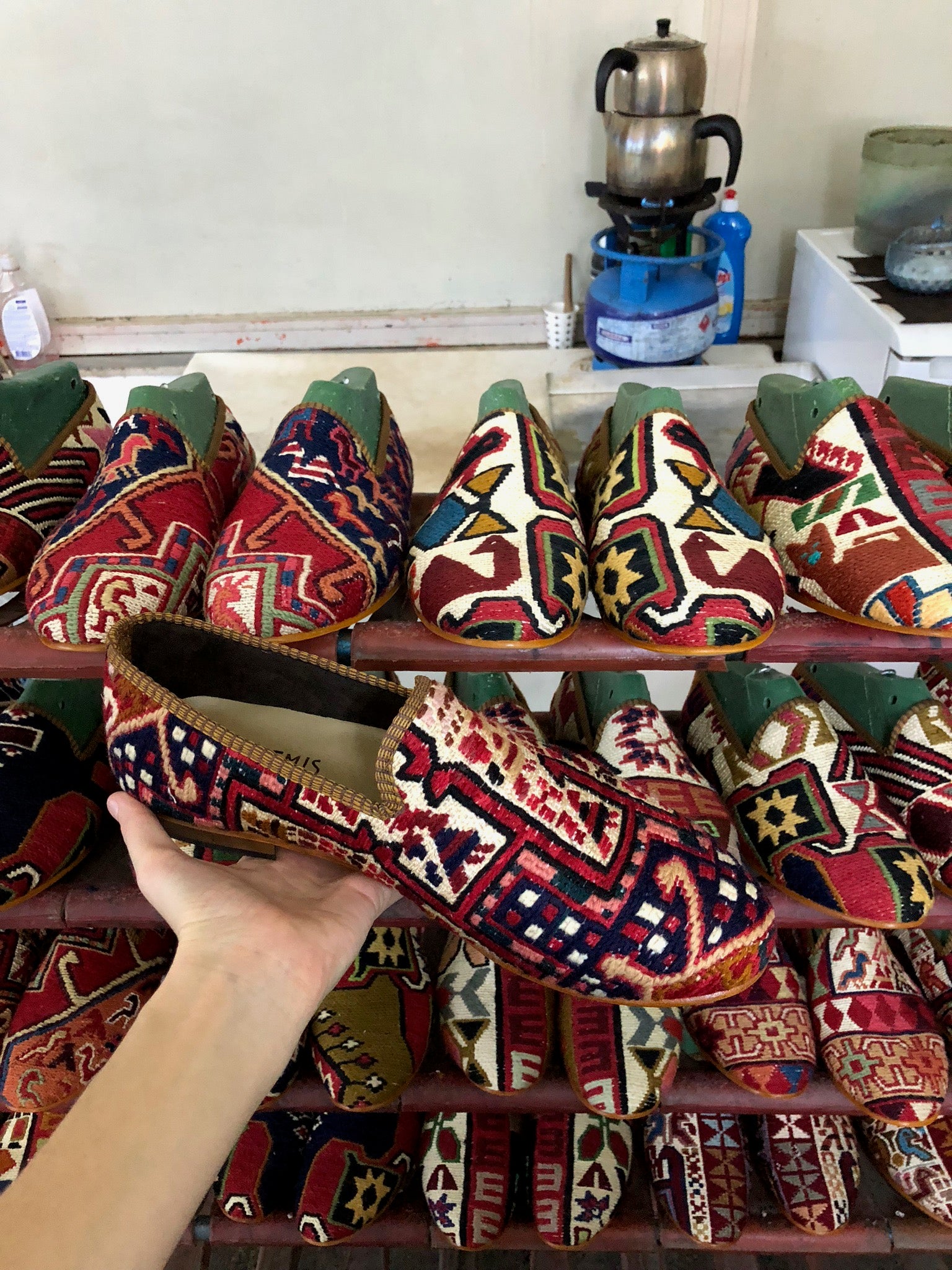Behind-The-Shoe

Whether you’re a seasoned Artemis collector, slipping on your first pair, or still having a hard time deciding between patterns (it happens to all of us!) we’re excited to share our brand and products with you.
Everyday, we hear from customers about the enjoyment and richness that our products add to their daily lives, and nothing gives us more pleasure than this! In this email, we are going to share a bit of background info about our most popular product!

Each shoe is handmade using one-of-a-kind textiles. It’s what make each Artemis shoe truly unique.
Our whole chain of production is hands-on and handmade. Our head-cobbler in Istanbul works in the family business started by his father, and employs other highly skilled and respected cobblers, some of whom have been creating shoes for forty years.

We make most of our products from vintage Turkish textiles known as kilims, and each pair of handmade Artemis shoes takes two full days to create.
Our kilims are vintage, up to thirty years old, and are sourced from all over regional Turkey. Some of the most beautiful handmade rugs may have been damaged at some point in their history, and we delight in being able to upcycle these for preservation.
Sumak

Sumak (also spelled Soumak, Soumakh, Sumac, and Soumac) kilims are crafted from a mixture of wool and silk, and have a stronger weave and a more textural hand than other types of kilim carpets. They are known for their intricate designs that incorporate finely detailed symbols, figures, and representations of animals. The crisp and boldly contrasting blues, reds, and whites often featured in Sumak kilims make them a favorite among our community.
Kilim

Kilims are a style of textile traditionally crafted on Turkey's Anatolian peninsula, primarily woven from wool on a cotton ground. Kilims are flat-woven, featuring a thin, tight weave that make them a perfect textile for crafting shoes. Every symbol, color, and pattern woven into the Kilim has meaning and represents a hope or a story from the life of the weaver.
Carpet

As opposed to flat-woven kilims, hand-knotted oriental carpets are known for their “pile,” the small, raised fibers that give it a fuzzy texture and a soft, velvety hand. That quality has made oriental carpets more difficult to work with in the past, but our cobblers have found a way to gently shave down the pile while preserving its lush feel and appearance.
"When we create a new style or product, I put the finished product on the table and just “watch it” for a little while. It’s such a pleasure to see a product come to life and see how beautiful it turned out. It’s such hard work to create a new product, so this is such a satisfying moment for me. "
Our Head Cobbler, Istanbul
We spoke with our founder, Milicent, about sourcing, creating pieces, and the best kilim she's come across!
When you’re sourcing textiles, what do you look for in the piece? Are you drawn to the colors, pattern, story?
First I’m drawn to the overall look and feel of the kilim. Does it have crisp lines? Pleasing colors? Would I want this kilim in my home? I avoid anything that looks artificial (like neon colors), or overall discoloration in the carpet. The colors need to feel like they came from nature. Crisp patterns come across beautifully on our products so I always gravitate towards those. Here are a few of my favorite carpets ever. And no, I never, ever get sick of looking at Kilims and carpets!!

Once you’ve sourced the textile, how do you decide what item you want to create? Are there specific traits of the textile for a loafer vs. a bag?
Yes! We choose completely different patterns depending on the final product. For example…we reserve the most intricately and small scale patterned kilims for small products, like Bi-fold wallets, pocketbooks, and shoes. We’re working with a small surface area, so large scale patterns won’t look like anything once they are cut down. For Weekender, and Travel Duffles, we use our largest scale patterns. The large surface area will show off a big and beautiful pattern so well. Choosing the right kilim for the right product is one of the most fun parts of my work…it feels like a puzzle!


Have you come across any really memorable kilims?
Five years ago or so, I was looking through a pile of kilims, and came across one with my birthday woven into the pattern. It was March 15, 1980 (I think that was the year). I think that I shrieked a little bit and scared the men in the factory! My rug dealer explained to me that the weaver had signed the kilim with her name, and the date that she finished the kilim. Such a beautiful way to memorialize the artist and time.
I find amazing things whenever I look at our Sumak carpets. Like crazy looking birds, and cats that are made up of colorful stripes. Look closely and you will definitely find these things as well. It’s a treasure hunt.



